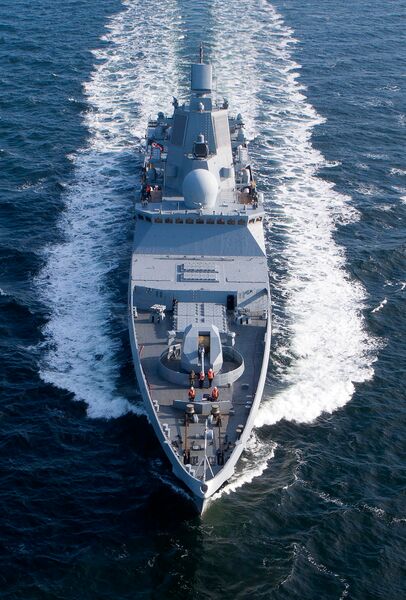
The Russian Navy's Project 22350 frigate Admiral Gorshkov is set to be the first vessel to be equipped with the 3M-22 Tsirkon hypersonic missile in the coming months. (Michael Nitz/Naval Press Service)
Russian President Vladimir Putin approved a new naval doctrine on 31 July that offers a glimpse of Russia's global maritime ambitions.
The doctrine, which was unveiled during Russia's annual Navy Day celebrations, replaces the Maritime Doctrine of the Russian Federation (2015) .
It reiterates Russia's stance on advancement of NATO's military infrastructure close to Russian borders. In addition, the doctrine lists increasing NATO exercises in waters adjacent to Russia, attempts to weaken Russia's control over the Northern Sea Route, and the buildup of foreign naval forces in the Arctic as some of the main challenges and threats to Russia's national security.
The doctrine also acknowledges shortcomings that pose a risk to Russia's maritime activities, including the lack of overseas outposts for Russian naval vessels, and a small share of the Russian merchant fleet for international transportation.
It outlines priorities for the development of maritime activities, which include the development of maritime transport, offshore pipeline systems, and marine scientific research.
In a specific mention of the priorities in the Arctic region, the doctrine calls for controlling the naval activities of foreign states along the Northern Sea Route and increasing the combat potential and berthing facilities of the Northern Fleet and the National Guard.
The doctrine also stated an intention to establish high-tech shipbuilding facilities in the ‘Far East' (Pacific region) designed to construct large capacity vessels such as a modern aircraft carrier, and vessels to fulfil the requirements of the Arctic.
Looking to read the full article?
Gain unlimited access to Janes news and more...







